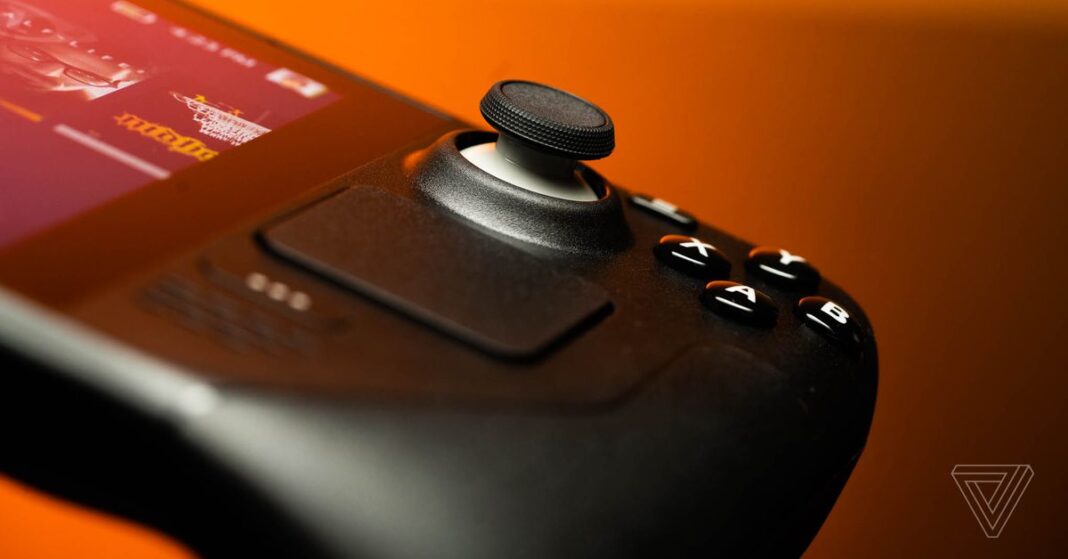If I informed you that Valve may make a play to dethrone the Sony PlayStation and Microsoft Xbox in your lounge this subsequent 12 months whereas concurrently difficult the Meta Quest because the gamer’s VR headset of selection, would you imagine me? As a result of Valve might have a lot of SteamOS {hardware} on the way in which.
If there’s hearth the place we presently see smoke, Valve is presently getting ready a wireless VR headset codename Deckard, a pair of trackable wands codename Roy, a Steam Controller 2 gamepad codename Ibex, and a codename Fremont living room console too. (That final one now looks likelier than it did yesterday.) And Valve has additionally now seemingly revealed plans for companions to create third-party SteamOS {hardware} too.
It gained’t be simple to tackle Sony, Microsoft, or Meta. These corporations have so much to lose, they usually’re deeply entrenched. However the Steam Deck has revealed an enormous weak point in every of their companies that may take them years to correct — the will to play an enormous library of video games anytime, anyplace.
And whereas they determine that out, Valve could also be constructing a complete new ecosystem of SteamOS {hardware}, one that would lastly let PC and peripheral makers faucet into the large and rising library of Home windows video games on all types of various {hardware} with out counting on Microsoft or subjecting their clients to the numerous annoyances of Home windows.
Right this moment, each main PC firm is constructing one or more Steam Deck rivals. However with out Valve’s blessing and assist, they’re saddled with a Home windows OS that doesn’t begin, pause, and resume video games shortly and seamlessly sufficient to really feel moveable and straightforward. When constructing these handhelds, they sometimes depend on off-the-shelf AMD chips, too, since no different producer’s elements presently compete on Home windows gaming plus battery.
However Valve has lengthy stated it is going to open up SteamOS to different producers, even recently committing to some direct support for rival handhelds just like the Asus ROG Ally — and the opposite week, Valve quietly up to date a document that will reveal its bigger overarching technique. It gained’t simply depart SteamOS sitting round and hope producers construct one thing — it’ll maintain their hand.
Valve now has an express label for third events to create “Powered by SteamOS” units, which it explicitly defines as “{hardware} operating the SteamOS working system, applied in shut collaboration with Valve.”
It moreover lets corporations create “Steam Appropriate” {hardware} that ships with “Valve authorized controller inputs,” in addition to SteamVR {hardware} and Steam Link {hardware} that permits you to stream video games from one machine to a different.
And if the leaks are right, producers might not have to choose only one or two of these labels. It sounds like Valve’s Steam Controller 2 might include the substances to be acknowledged and tracked in a VR atmosphere and that Valve’s VR wands will function sufficient buttons to double as a gamepad, enjoying Steam’s huge library of flatscreen video games as nicely.
Valve could also be placing within the work to scale back dependence on AMD’s x86 chips as nicely. Datamining by Brad Lynch, the Valve watcher whose group has uncovered most if not all of those leaks, showed that Valve has been testing many Steam games, together with VR video games, on Arm chips as nicely.
Whereas Valve once told me that the Steam Deck’s AMD x86 chip could be candidate for a doable future standalone VR headset, Arm chips may doubtlessly supply higher battery life and decrease weight for a conveyable product than x86 — even while Valve investigates more powerful AMD solutions than ever for a doable lounge console.
When Valve requested PC producers to signal onto its Steam Machines initiative over a decade in the past, with the concept of constructing lounge PC consoles, it asked for a leap of faith with very little to show and a tiny chance of success. It took years for Valve to even construct the oddball lounge controller for its Steam Machines, and it didn’t get far in convincing Home windows sport builders to port their video games to Linux.
However by the point it introduced the Steam Deck, Valve had hammered out a Proton software program compatibility layer so good that many Home windows video games now run higher on Linux, and created essentially the most customizable but acquainted set of controls ever made.
If producers may construct their very own Steam Machines moderately than equal Home windows machines, they may supply higher gaming merchandise than they do at the moment. Perhaps they’d even need to launch a VR headset that isn’t tied to Microsoft or Meta if it doubled as a Steam Deck, portably enjoying many years of flatscreen video games.
It’s not clear any of this can pan out; Valve is an exceedingly small company that tries to not chase too many issues at a time. After I converse to PC business executives about why they decide Home windows over SteamOS, some say they’re involved about whether or not Valve would actually have the ability to assist them.
But it surely’s simply as intriguing an concept as it was 12 years ago when Gabe Newell explained the initial vision to us, and this time, there’s a much better likelihood it’ll work.

